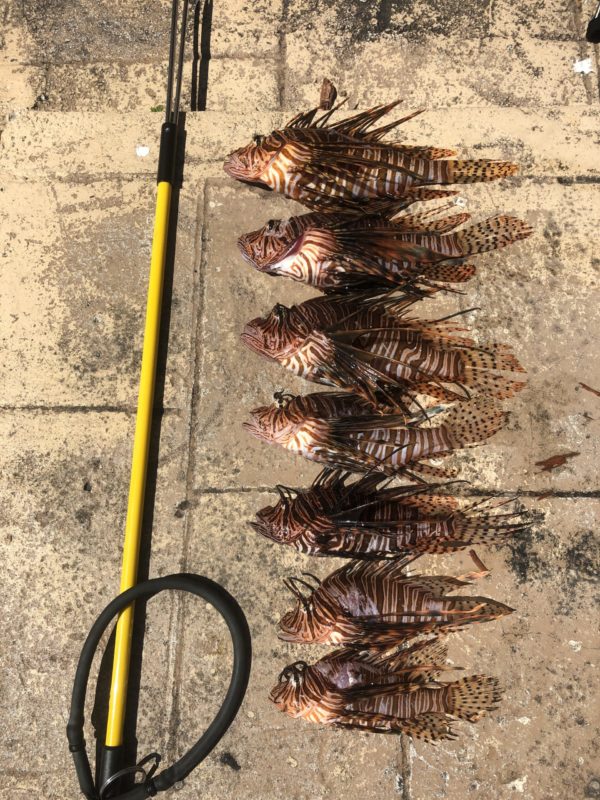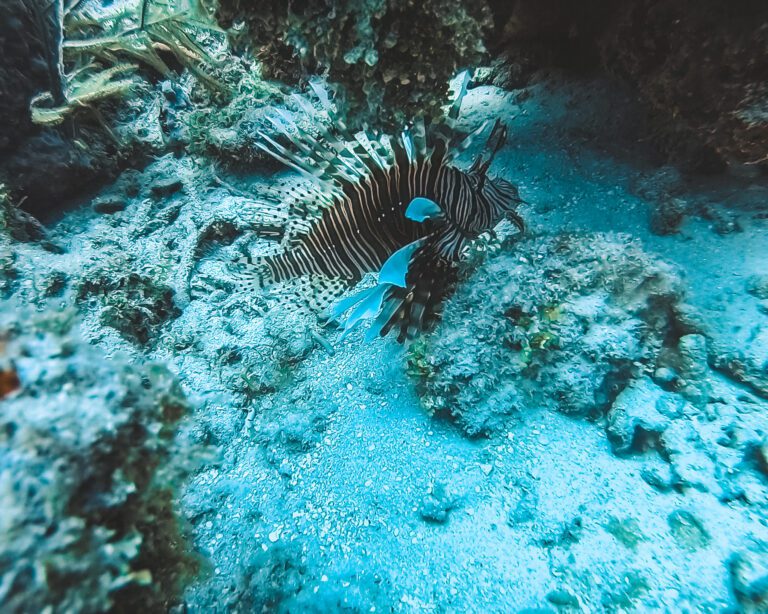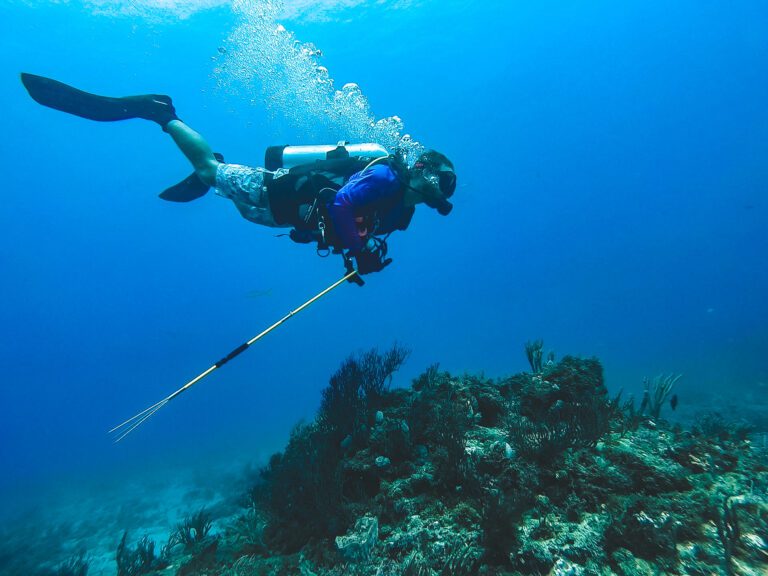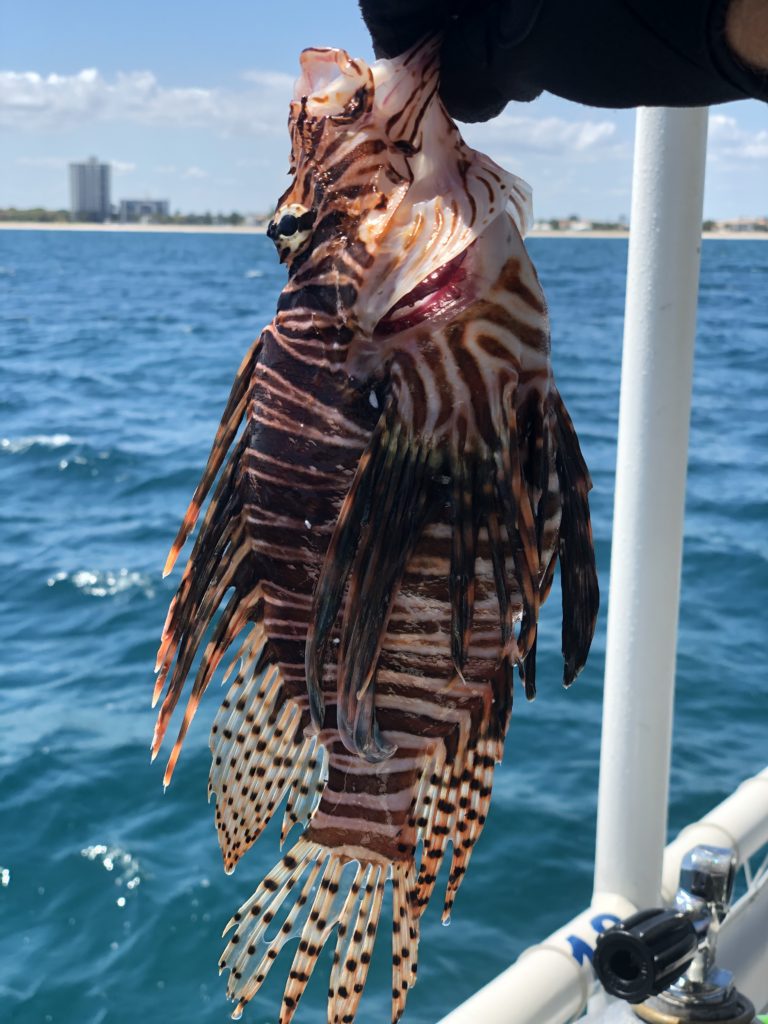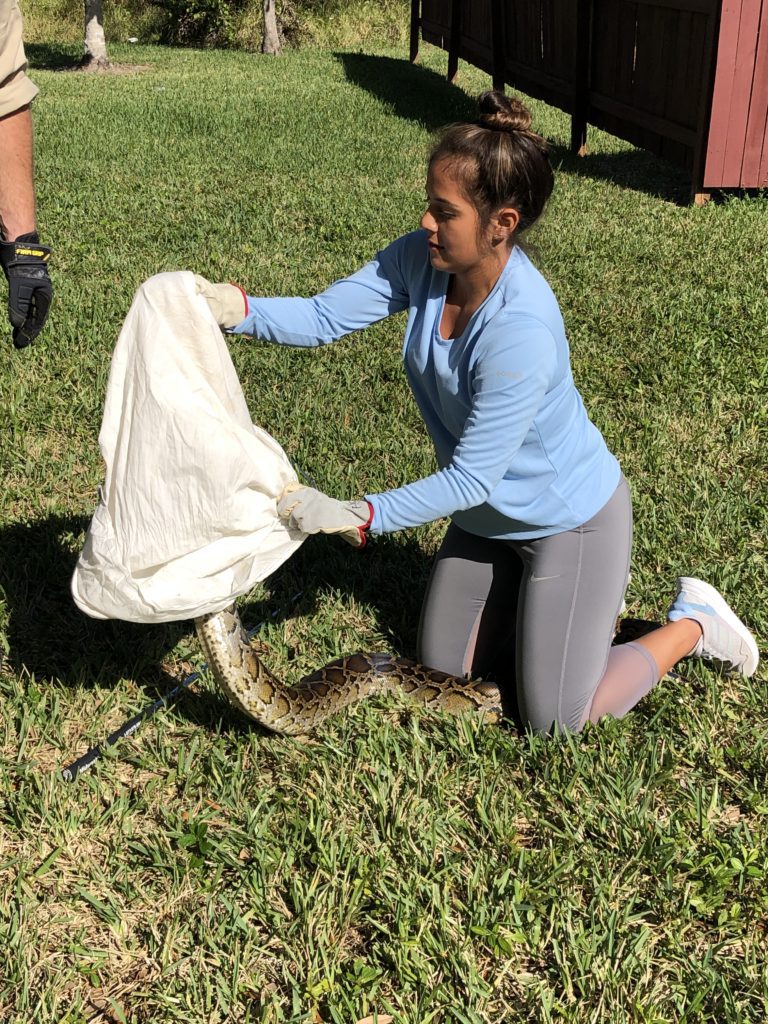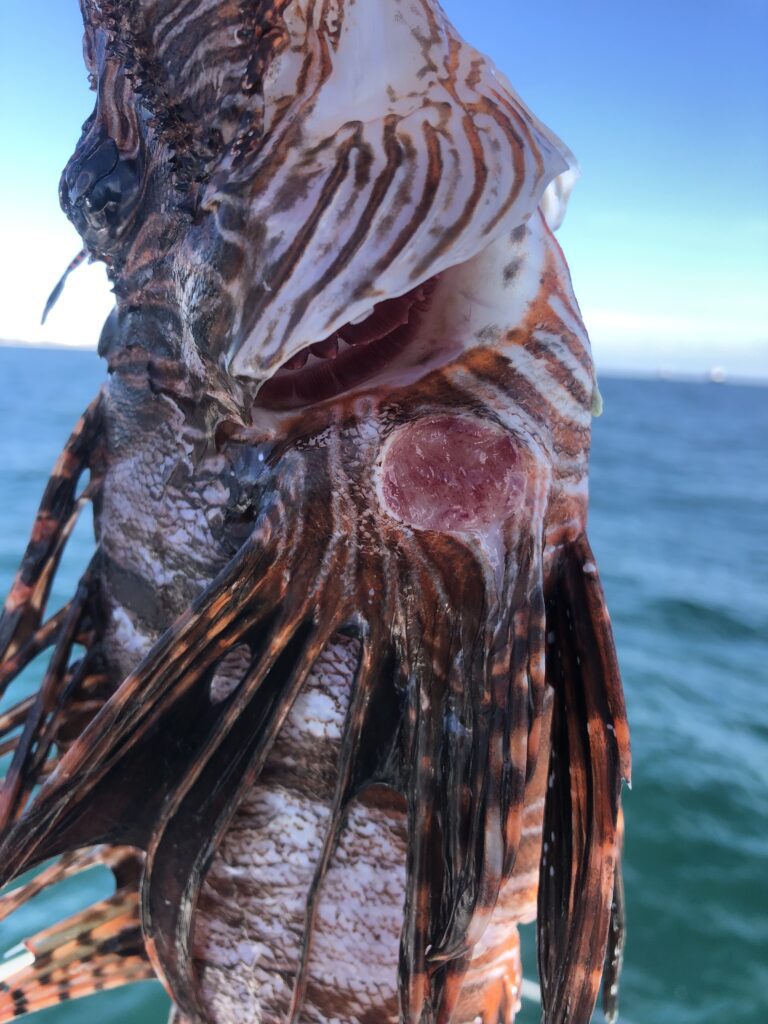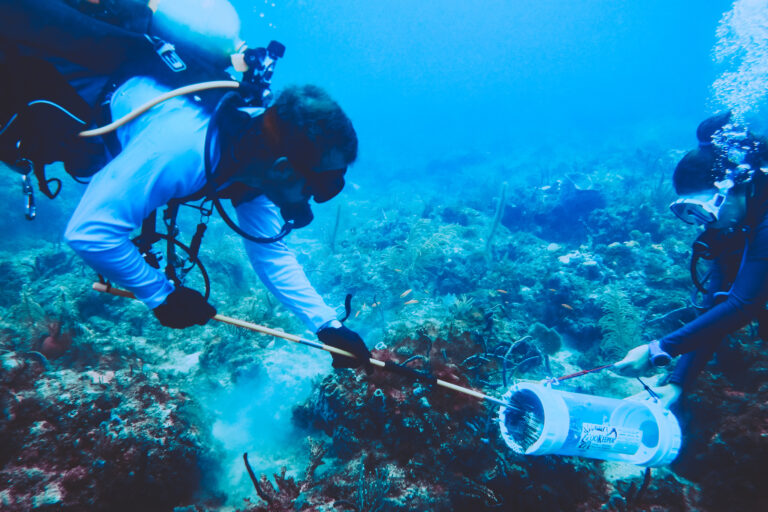The Gear You Need to Hunt Lionfish
Lionfish. You’ve heard of them. You’ve seen them. Have you ever wanted to hunt them? Get started with ease. This is your guide to the few pieces of gear you need to hunt lionfish!
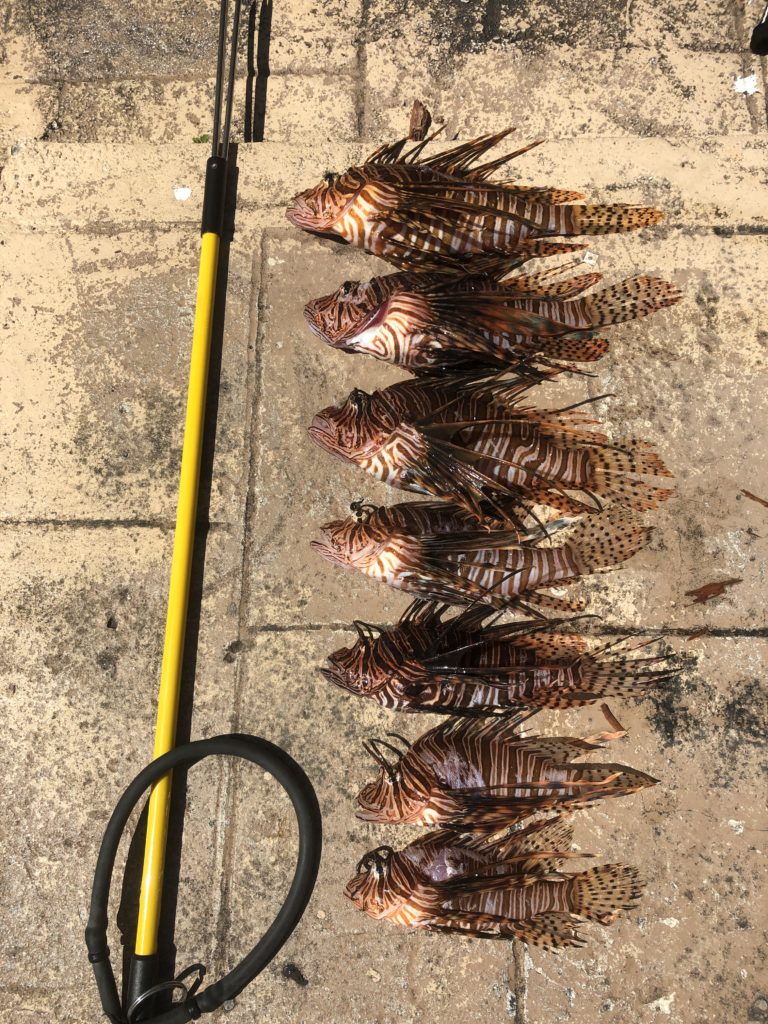
The Gear You Need to Hunt Lionfish
The depths of the western Atlantic, Caribbean, and Gulf of Mexico are quickly being overrun by an invasive species: lionfish.
Unfortunately, this fish is wreaking havoc on our ecosystem and native fish populations. And the worst part: they have no natural predators! What do we do? Well, the only way to remove them are by humans hunting them underwater!
That’s where you come in.
And don’t worry, getting started in lionfish hunting is easier than you think. All you need is your typical scuba outfit and the few gears items we discuss below! By the end of this article you’ll know exactly what you need to start hunting lionfish!
So saddle up! You’re in for a hunt like none other!
A spear
Underwater a spear comes in various forms: a speargun, Hawaiian sling, and a pole spear. The best and easiest spear to use for lionfish is a pole spear.
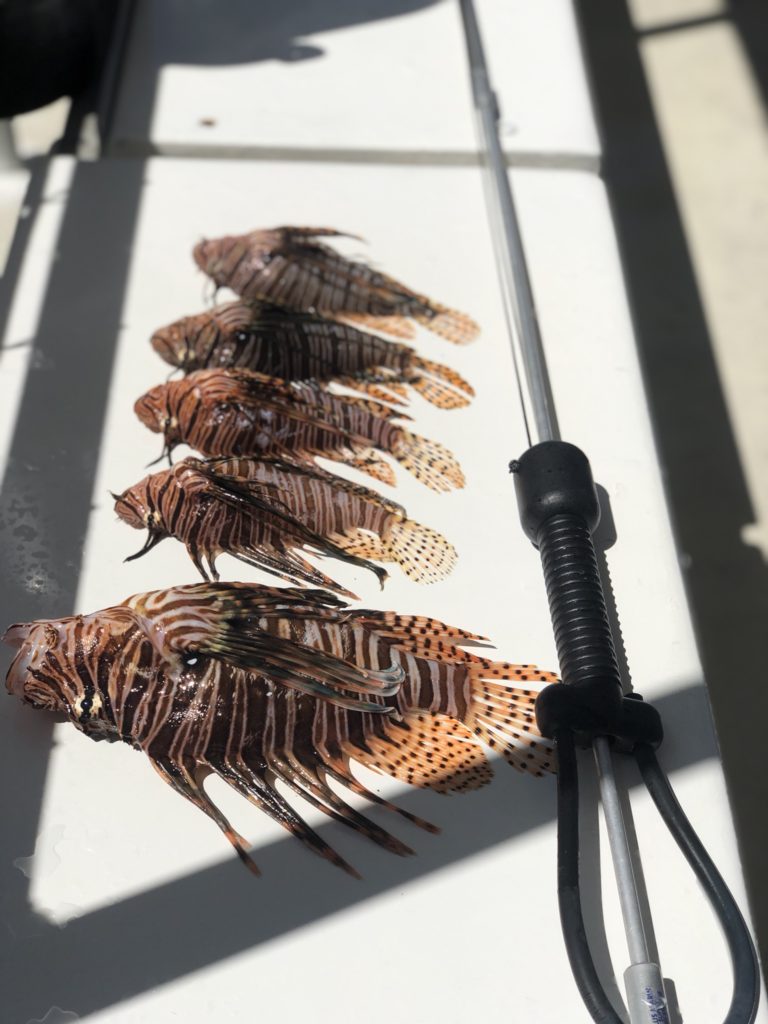
What is a pole spear?
A simple to use underwater tool in spearfishing. It consists of three parts: the shaft (typically fiberglass or metal), the spear tip (usually three or four prongs), and a rubber loop (also known as a sling).

How does a pole spear work?
The rubber loop is rung around your thumb and the spear is pulled back to grip just above the spear tip. This creates tension in the rubber loop so when you release the spear, it flings forward to pierce your prey.
Why is a pole spear used for lionfish?
Lionfish have no natural predators, remember? They’re simply not accustomed to fleeing from anything, so why would they flee from you?
This lack of instinct in the lionfish allows you to get close enough without it fleeing from the scene. When executed properly, the process will be quick, clean, and humane!
In addition, the pole spear allows you to keep a safe distance from the lionfish. Keep in mind, the spines are venomous!
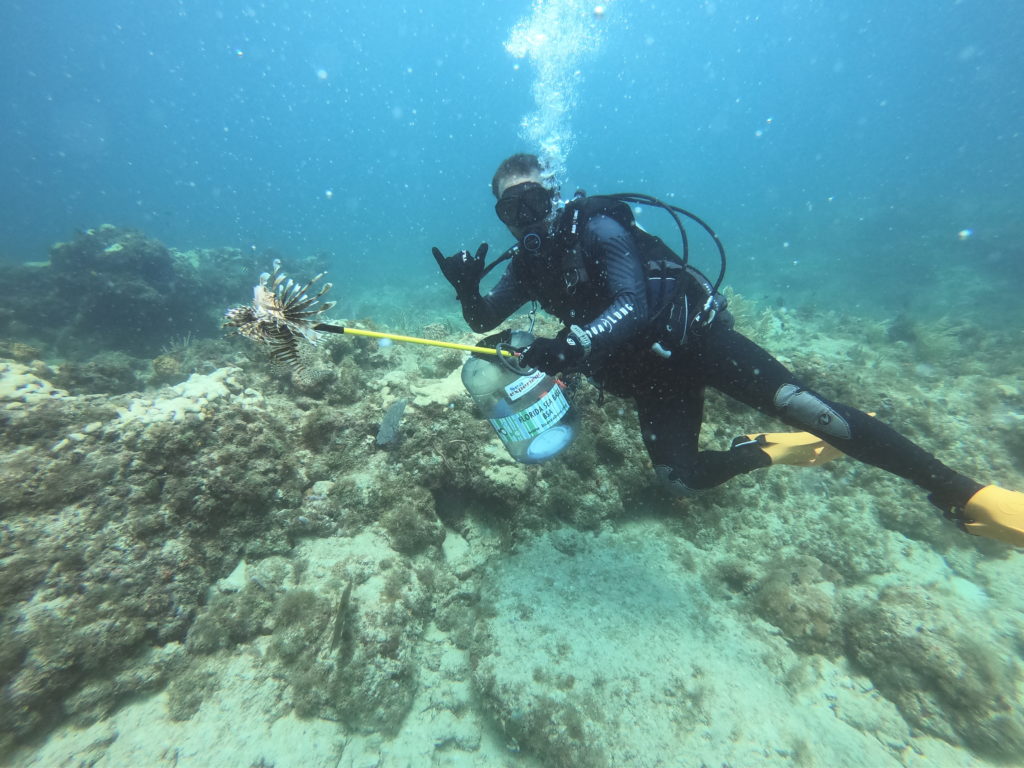
How long should your pole spear be?
Pole spears vary in length, typically from 3 feet all the way up to 6 feet. The longer the spear, the more range you’ll have when hunting underwater.
Specifically, lionfish do not require a long spear as you can get pretty close without spooking them. We recommend a 3 or 3.5 feet spear as a starter. They’re cheaper and just as effective as their longer counterparts. But ultimately, use what feels comfortable to you!
Where can you get a pole spear?
Visit your local dive shop as they’ll usually have a small selection. To see more, browse the web for a greater selection of spears! Honestly, just keep it cheap (under $50). For lionfish, they all work about the same.
Other factors when considering a pole spear.
- Purchase a few extra slings (the rubber loop). They do wear over time, eventually losing their strength to the point of breaking. Just be sure to buy the right size for your spear.
- Go with a three pronged tip on your pole spear as opposed to a single tip. This ensures the lionfish doesn’t escape after you’ve speared it.
- We prefer a fiberglass spear shaft. I owned an aluminum one only for it permanently bend after someone sat on it (ugh).
- Additionally, make sure it’s a thick shaft. We own a longer but thinner pole spear and the effectiveness is miserable. Flimsy thing.
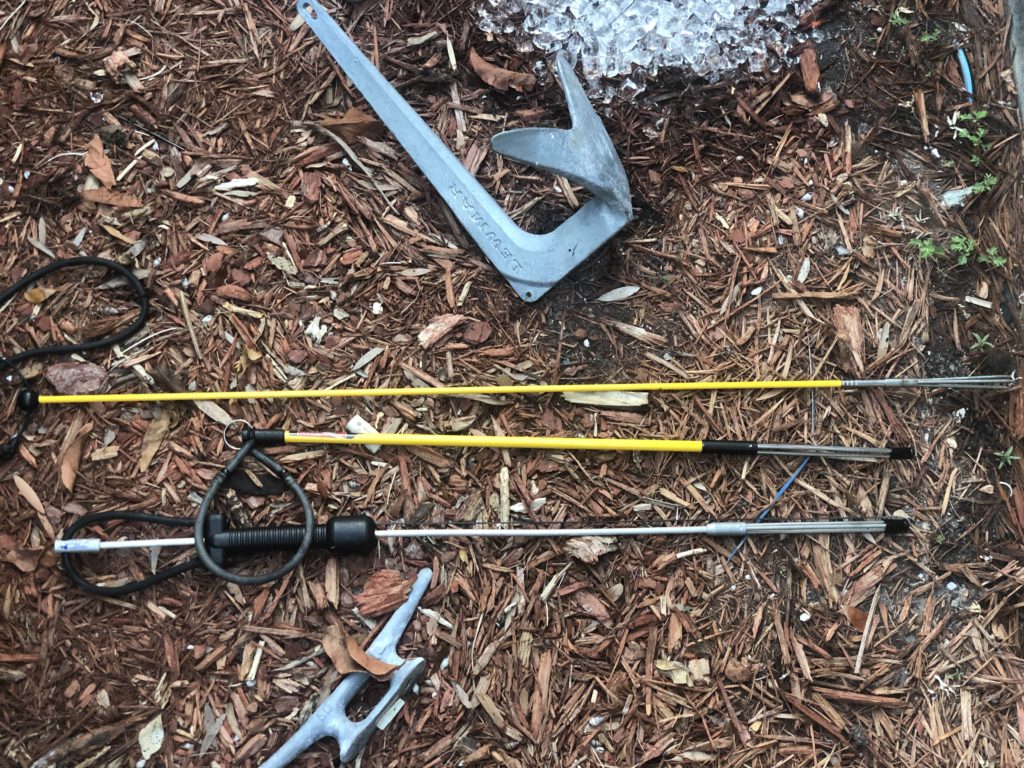
Recommended pole spears
These are the few pole spears we can recommend:
Lionfish containment system
Lionfish have 18 venomous spines serving as a defense mechanism to deter predators. If poked by one, it’s going to hurt. Badly.
So what do you do with this dangerous fish you just speared? Start piling them into a containment system, of course!
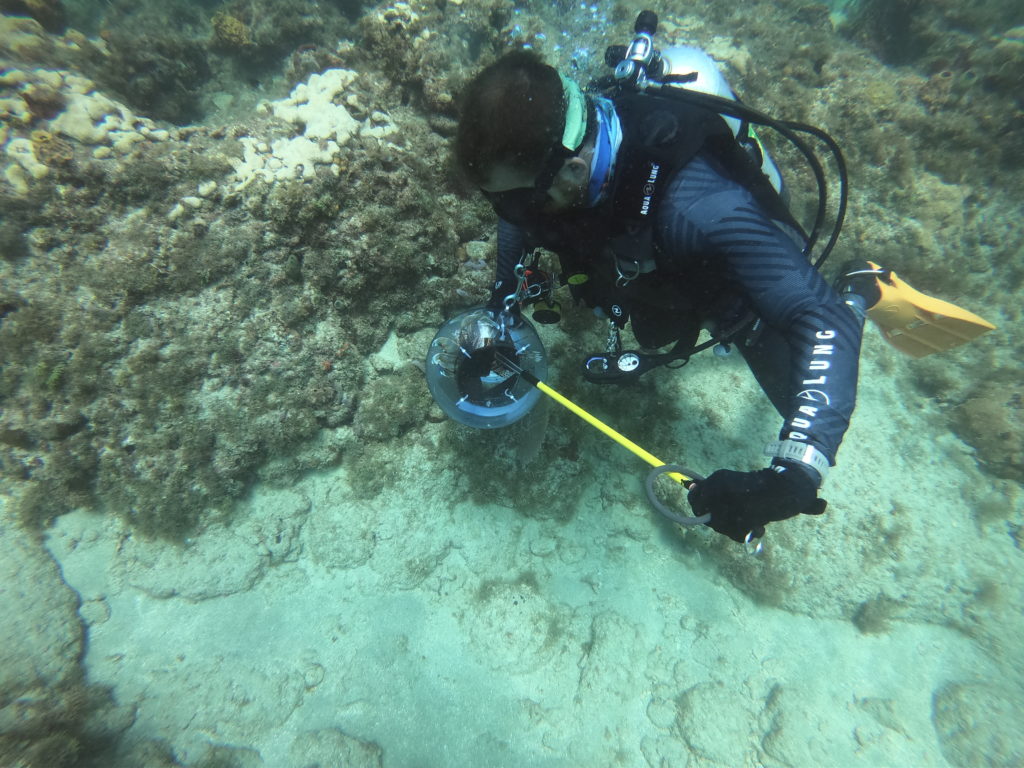
What is a lionfish containment system?
Lionfish containment systems are all designed similarly: a plastic tube (to protect you from spines), a funnel on one end to insert your prey, and a cap on the other to empty all your prey after your dive. The funnel allows you to put the lionfish in, ripping it off your spear, and ensuring the fish stays but your spear leaves. Genius, right?
What’s the best lionfish containment system?
Without hesitation: The Zookeeper. It’s the most functional on the market, and it’s not even close. The guy who invented it was brilliant with his design and even more brilliant with his impenetrable patent.
Which brings us to our next point: it’s expensive.
If you have the cash, by all means, it is WELL worth it. If you want a cheaper option though, we’ve built our own containment system for pennies on the dollar. Stay tuned for a post on how to make it!
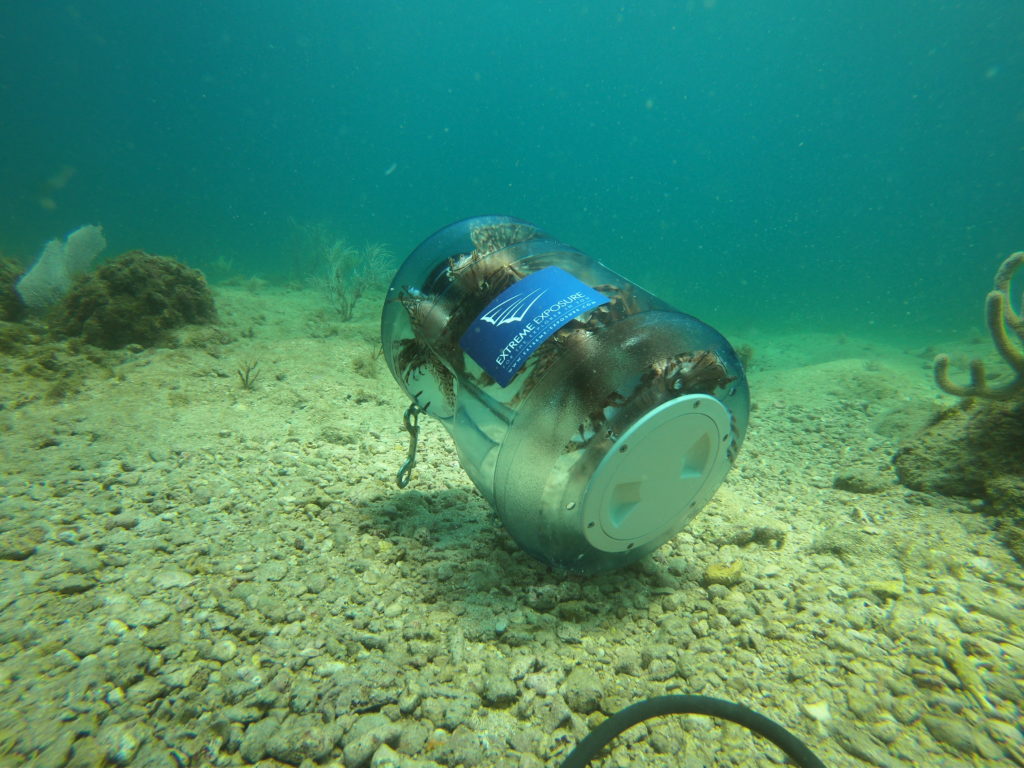
Where can you get a lionfish containment system?
Most dive shops (where lionfish are a problem, at least) have a few Zookeepers in stock. But just between you and me, they tend to charge overboard.
The cheapest I’ve seen online is at the House of Scuba.
A flashlight
Why is a flashlight one of the pieces of gear you need to hunt lionfish? During the day, lionfish tend to hide under rocks, ledges, and other sheltered areas. Shining a light under a ledge might just reveal a lionfish you previously didn’t even see!
Choosing a flashlight is a topic for another day, partly because I don’t fully understand all the choices available (working on it, though). For now, here’s the flashlights we use for our recreational diving activities, lionfish hunting included:
Princeton Tec makes excellent dive lights.
I also own this one from VOLADOR. The rechargeable battery was the selling point for me.
Gloves
As mentioned, lionfish have 18 venomous spines – not good if you get poked! Mitigate your chances of this happening by always wearing gloves.
If you own a pair of gloves already, just use those, they’ll work just fine. If you want something more, HeadHunter makes a great glove designed for spearfishing. They even have an added puncture-resistant padding.
Puncture resistant gloves for hunting lionfish.

Cutting Tool
Marine debris, self defense, or untangling marine life; a cutting tool can always come in handy underwater. Now, you can add one more use to the list: removing lionfish spines.
Some people like to remove the spines from lionfish (particularly if they’re not using a containment system), but that’s besides the point. You should always carry a cutting tool when diving, regardless.
I use a few. Sea snips are great for removing lionfish spines and Aqualung has a great utility knife that screws directly into Aqualung BCDs.
Sea Snips are a useful tool whether you’re handling lionfish or not.
Note: Before buying any dive knife though, check with your BCD manufacturer to see if they have one designed to work with your gear!
A thermos of hot water
If you ever get poked by a lionfish, you’re REALLY going to be wishing you brought this along.
The venom in lionfish spines are broken down by heat. So, if you get poked, soak the wound in hot (near boiling) water. The enzymes in the venom will (hopefully) be broken down before they can enter the rest of your bloodstream.
Don’t be a hero. Bring the thermos. At the very least, you’ll have some nice warm water for your after-dive tea.
Our Recommendation: dive trips are long. What better product to keep water hot than a Yeti bottle?
A cooler for your catch
You’re going to want to keep and cook these guys! Trust us! Lionfish are absolutely delicious – providing a white, flaky, mild flavored fish that every one dreams about.
Just don’t be that guy/gal: using the dive charter’s cooler for your catch. A big no-no in the diving world, if you ask me. Bring your own cooler!
And once you fillet your lionfish, be sure to use REEF’s Lionfish Cookbook to prepare them for your grill-out later that evening!
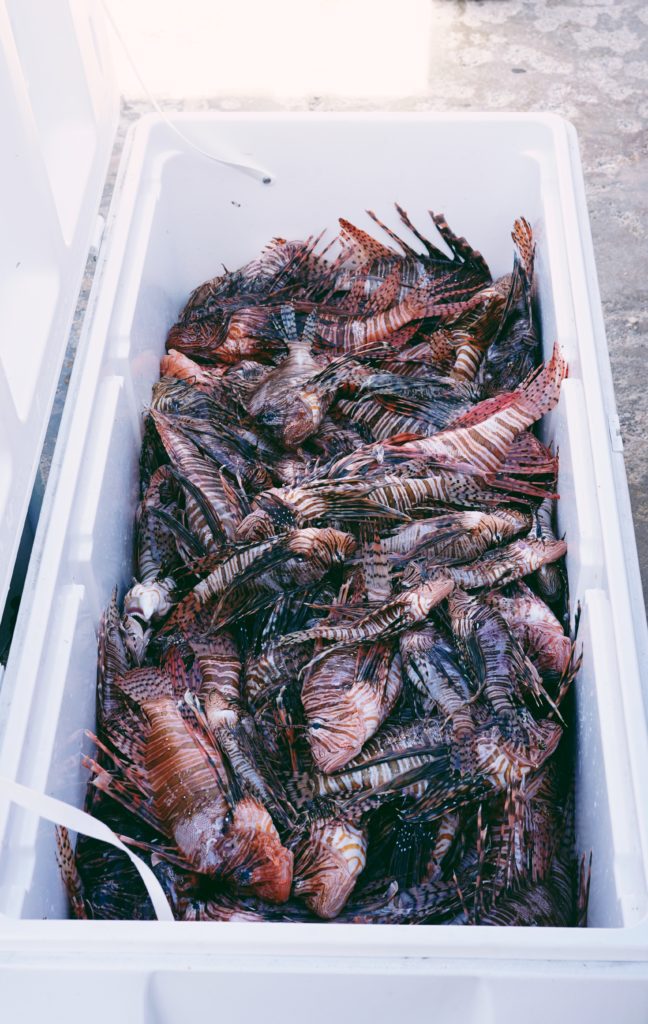
Now that you know the gear you need to hunt lionfish…now what?
Get out there and hunt! The lionfish invasion is happening all over the western Atlantic, Caribbean, and Gulf of Mexico and they need YOUR help! Get started in South Florida by finding a dive shop:
New to diving? Get started here:
Happy hunting, explorers!
Enjoy this Post? Pin it!
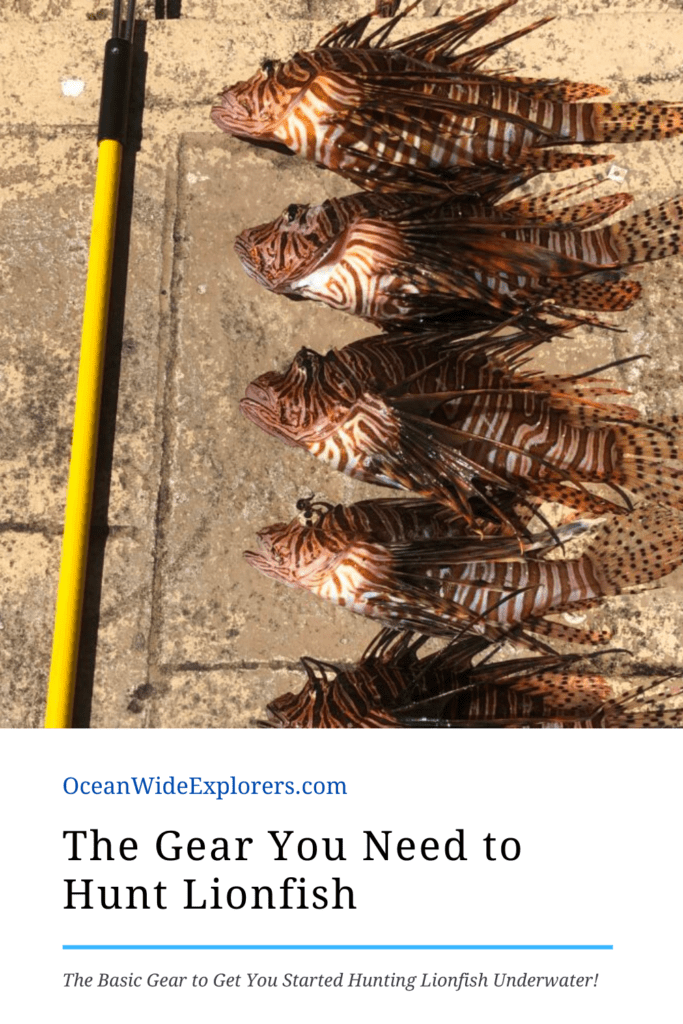
Read More About Lionfish
We hope you enjoyed our post on what gear you need to hunt lionfish. Hopefully you’ll find it useful on your next adventure! Here are a few more ocean-loving articles we think you should read next:
- Your Complete Guide to Hunting Lionfish
- Tips to Catch More Lionfish
- 18 Facts About Lionfish You Should Know
- Lionfish Hunting: Everything You Need to Know – A Limited Series
Any tips or tricks of hunting lionfish that we missed? Leave a comment below!

